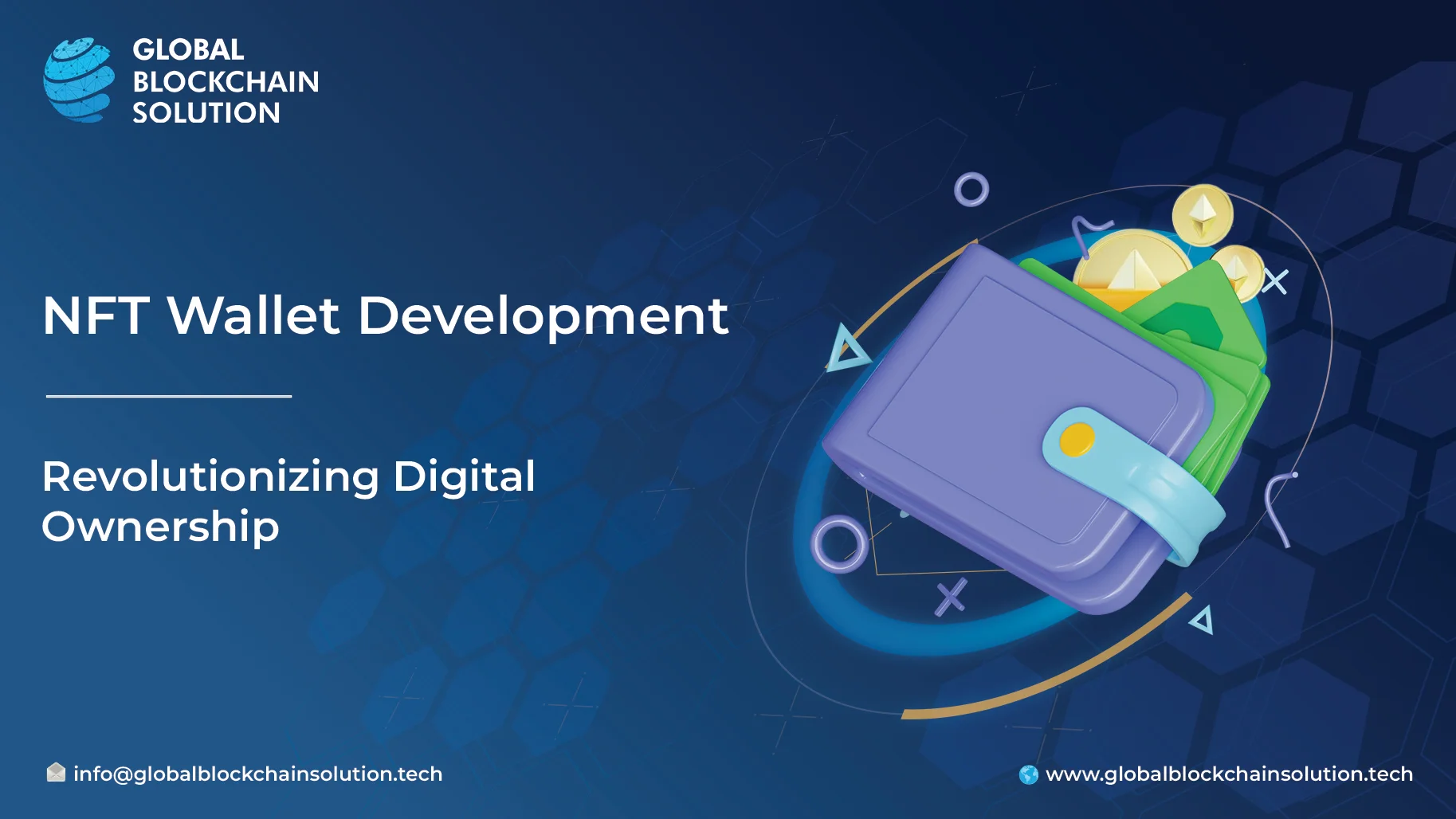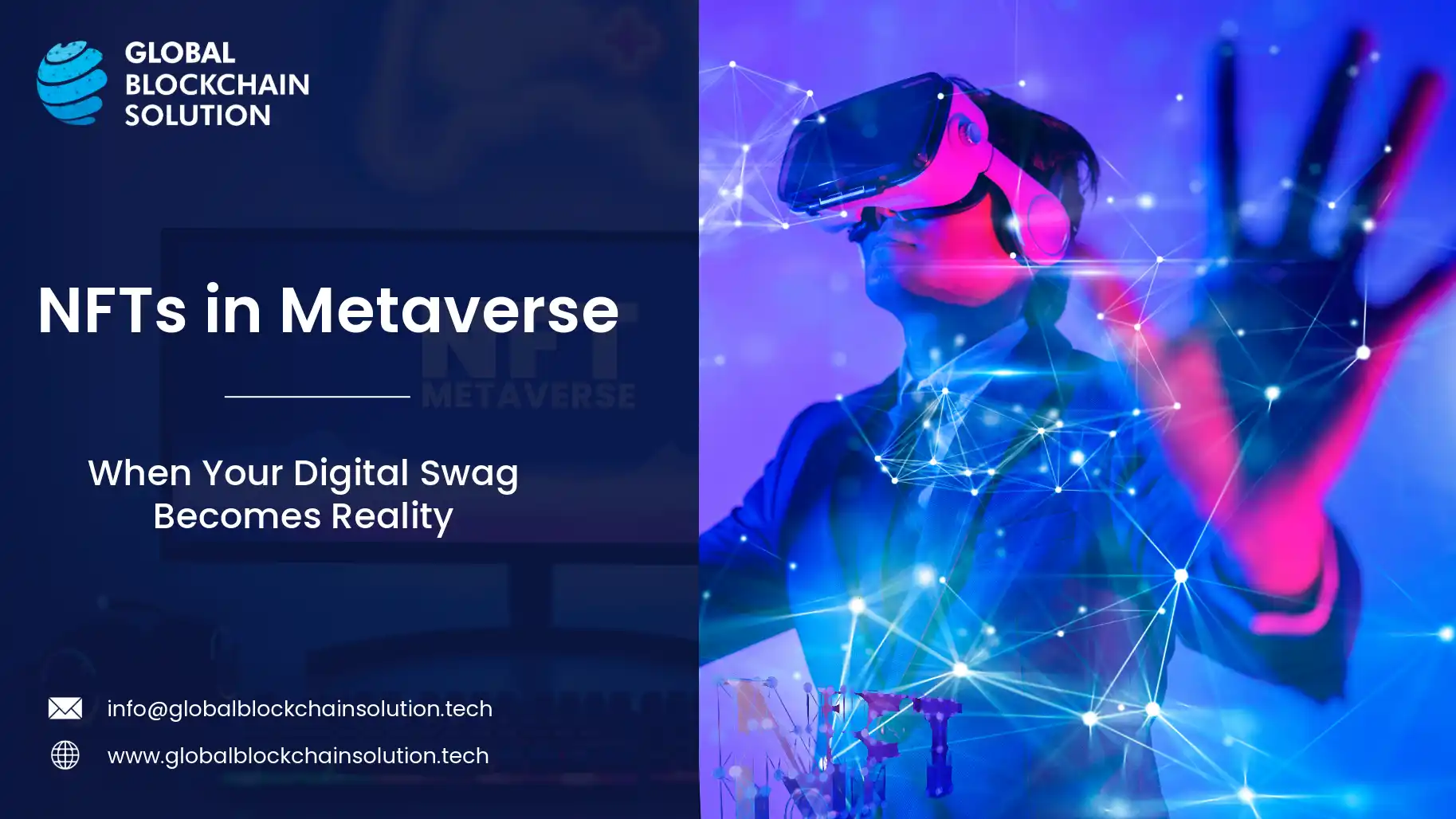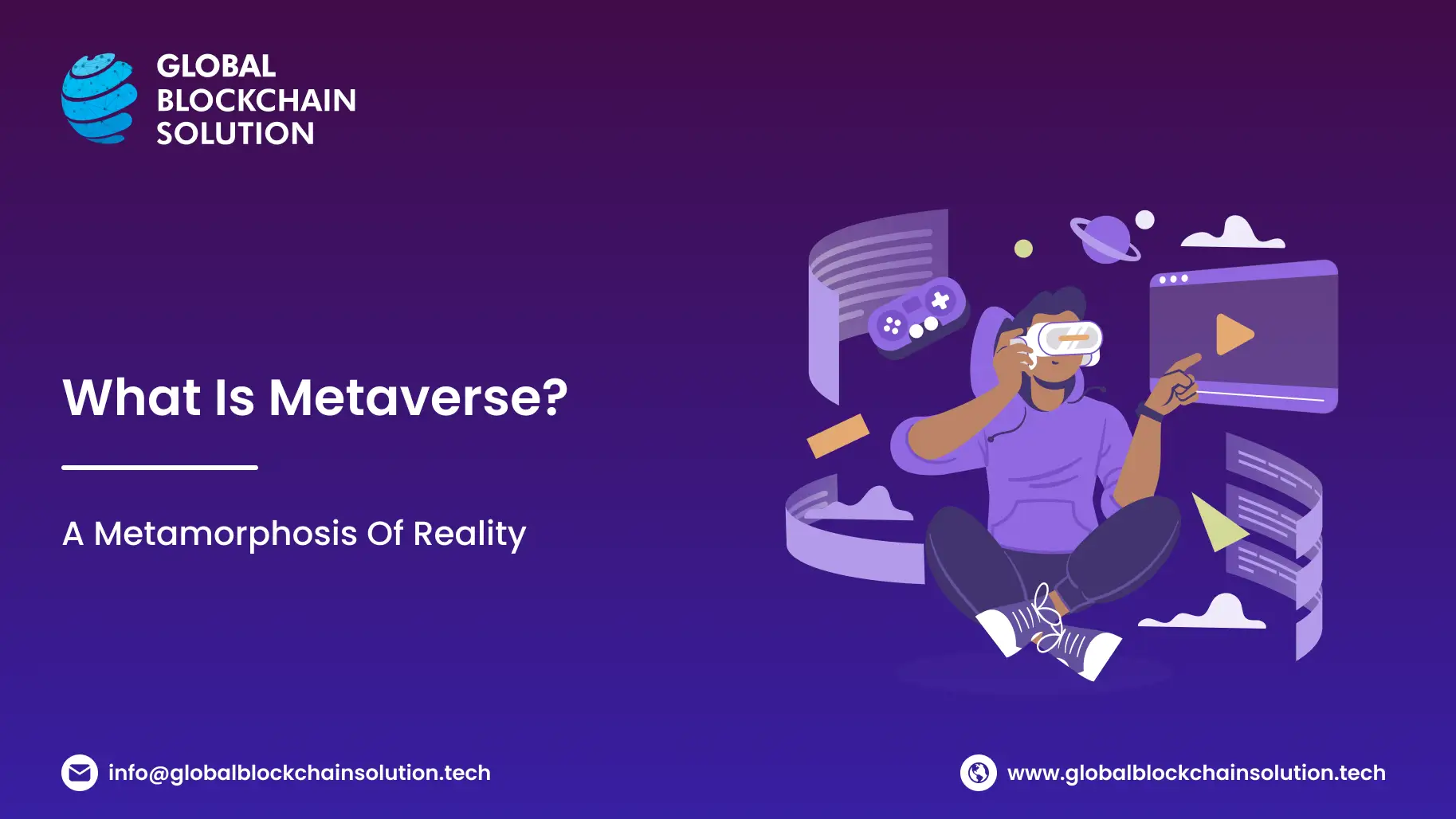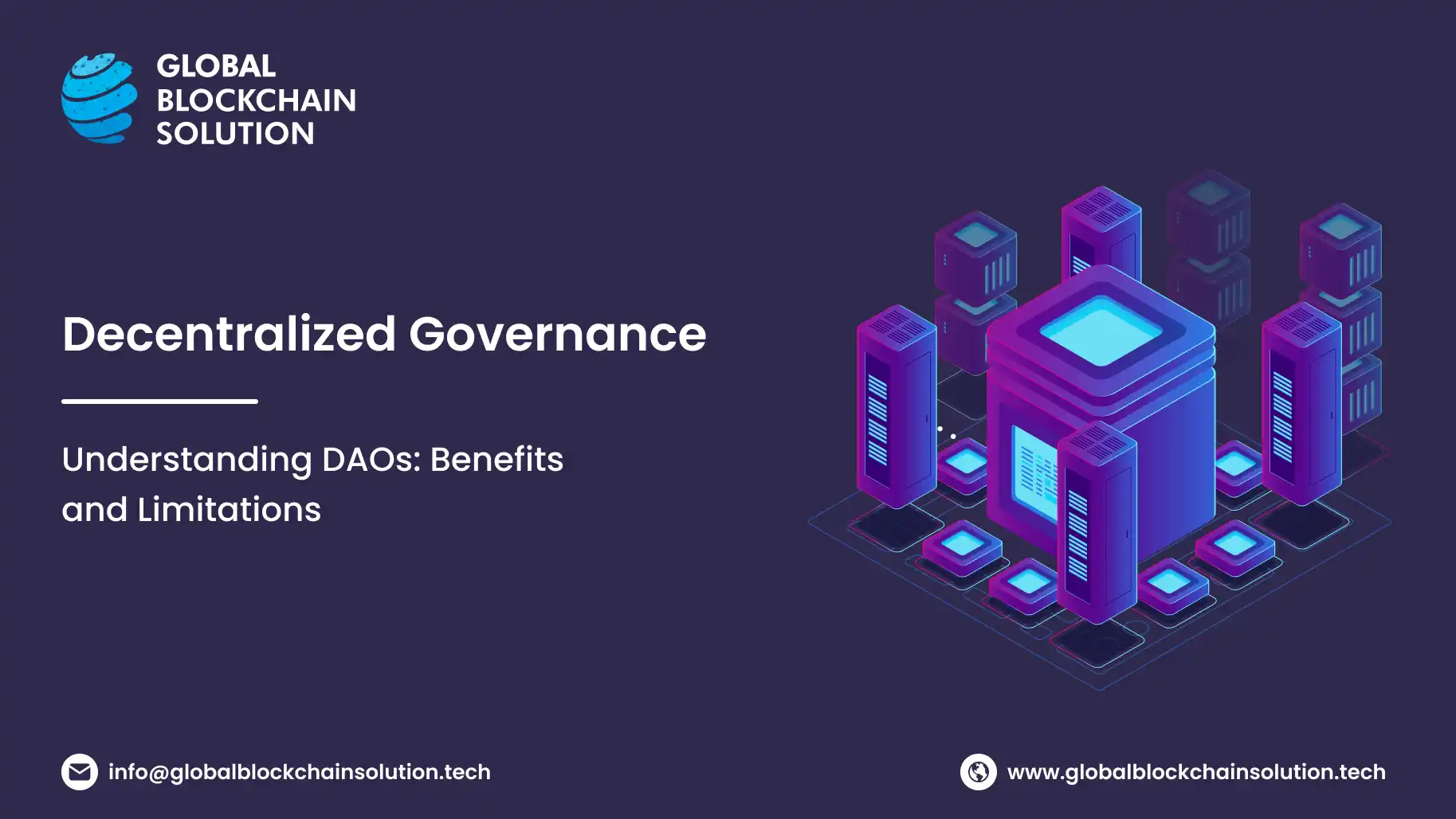The world of Non-Fungible Tokens is expanding exponentially, ushering in a new era of digital ownership. At the epicenter of this revolution is the NFT wallet - the key that unlocks access to collecting and trading unique digital assets.
But a secure, user-friendly NFT wallet development is no simple feat. It requires mastering the complexities that lie at the intersection of design, technology, and emerging blockchain protocols.
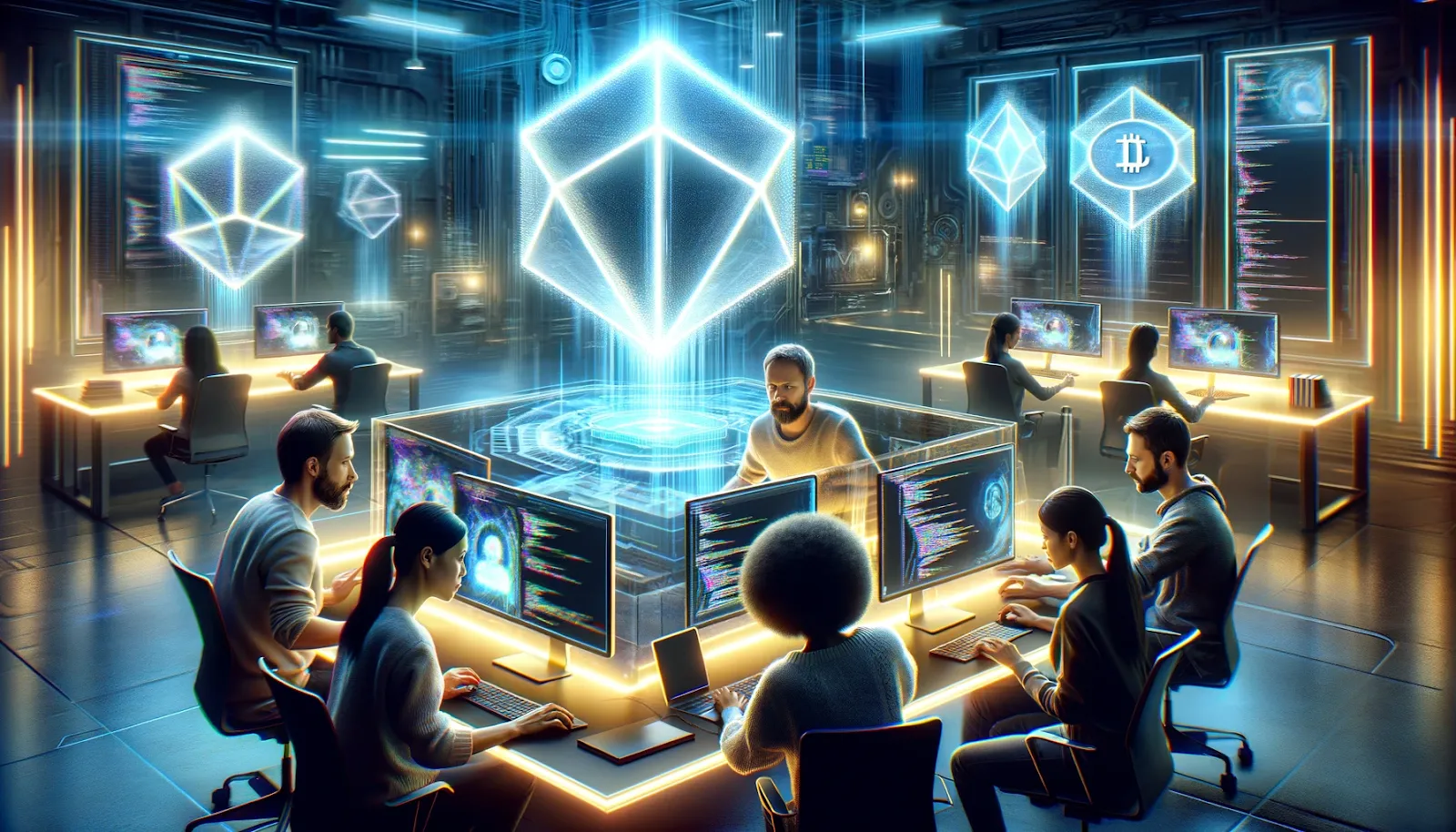
This is where Global Blockchain Solution steps in. With our pedigree in crafting bleeding-edge solutions, we stand ready to guide projects through the multidimensional universe of NFT wallet development.
In this article, we dive into some crucial areas that wallet creators need to get right. Whether you're looking to develop your industry-leading wallet or enhance an existing one, the insights below will give you an invaluable head start.
So, let's get right into the things that determine the success of an NFT wallet in the current marketplace. Integrating tips from Global Blockchain Solution's own development experience, we will uncover what it takes to build the wallet of the future.
This Article Contains:
Pre-Development: Planning and Strategy for NFT Wallet Development
Understanding your core objectives and focusing on your users is paramount during NFT Wallet Development. This approach not only ensures that you create a great product but also sculpt an experience that resonates with your target audience.
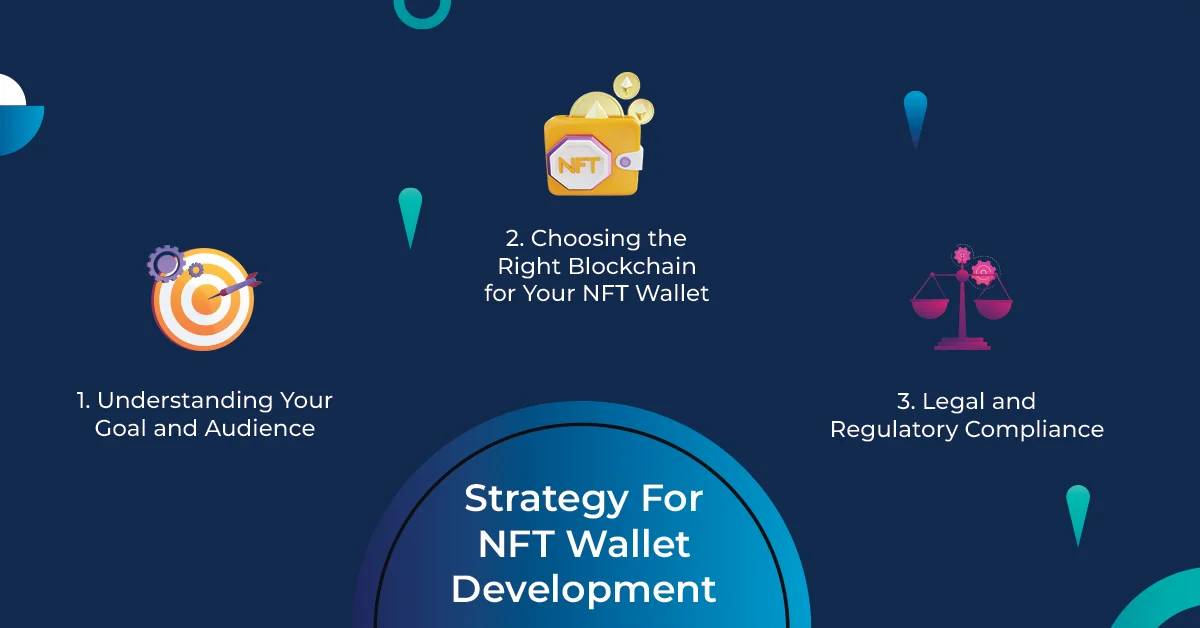
1. Understanding Your Goal and Audience
When Epic Games launched its first NFT game in 2022, it focused squarely on serving gaming enthusiasts. Features like in-game NFT management without needing an external wallet catered to the game’s niche audience. This strategic alignment of features with user needs while minimizing friction is crucial.
Simply put, creating an exceptional NFT wallet begins with clearly defining your vision and ideal user. Who is this wallet meant for - digital artists, gamers, or a niche community?
Conduct surveys and user research to unpack their pain points and must-have features. Their insights will allow you to align the wallet experience to your users' needs. But why is this necessary?
NBA Top Shot's strategic focus on the sports fan base, with features like direct USD purchases and simple onboarding, contributed to its massive growth. Identifying the primary users (artists, collectors, gamers, etc.) and tailoring the wallet to meet their specific needs will have a sizable impact.
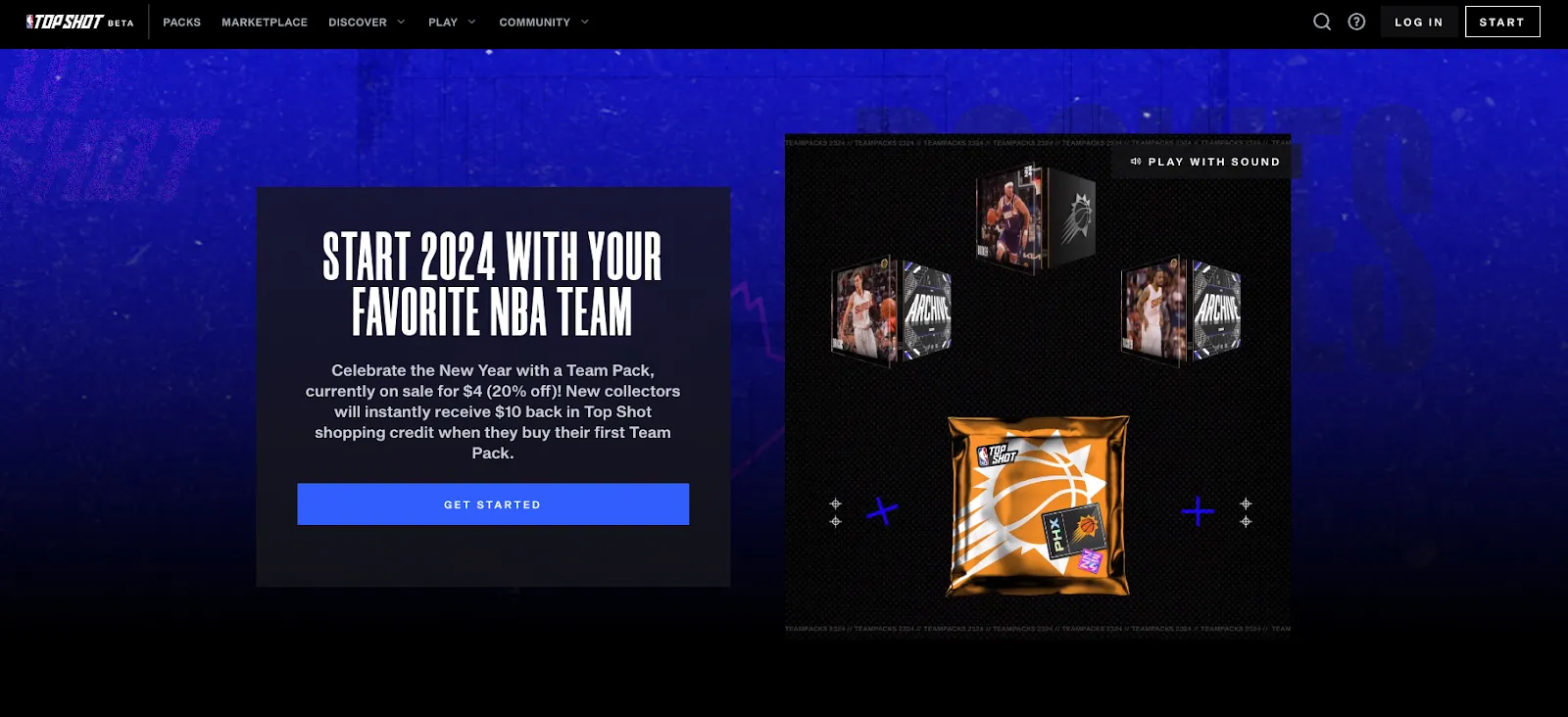
Develop detailed user personas and conduct surveys to understand your audience’s preferences and pain points.
2. Choosing the Right Blockchain for Your NFT Wallet
Selecting the most appropriate blockchain is pivotal, as different protocols offer unique capabilities that should align with your wallet's intended utility.
For instance, Ethereum's recent Merge upgrade to a greener and more efficient Proof-of-Stake consensus mechanism in September 2022 makes it ideal for mainstream NFT projects. It also has an exciting roadmap with Surge, Scourge, Verge, Purge, and Splurge, adding massive performance gains to the blockchain in the future.
Updated roadmap diagram! pic.twitter.com/MT9BKgYcJH
— vitalik.eth (@VitalikButerin) November 4, 2022
Meanwhile, Solana's blazing speed enables it to power emerging metaverse and web3 gaming experiences.
Cardano is another protocol that made waves in 2023 as an energy-efficient blockchain tailored for frictionless NFT creation and transactions. With recent upgrades like Hydra, Cardano is further primed to become the blockchain of choice for next-gen NFT marketplaces and ecosystems.
Remember, the blockchain trilemma means sacrifices in decentralization, security, or scalability. So, keep that into your consideration as well.
Also Read: What is Blockchain Trilemma?
Security is the non-negotiable foundation of any successful NFT wallet. Amidst a rising wave of cryptocurrency fraud, as highlighted in FBI's "2022 Internet Crime Report", integrating advanced encryption, hardware wallet support, and biometric authentication is crucial to safeguard users' assets.
For example, requiring two-factor authentication and email verification before allowing sensitive actions can significantly boost security. Ongoing security audits, penetration testing, and bug bounty programs also help ensure your wallet's defenses stay ahead of emerging threats.
Combining public chains with complementary technologies like IPFS and zero-knowledge rollups is also a good idea depending on the project’s needs. But restraint is also prudent. Integrating too many disjointed technologies can overly complicate the user experience.
3. Legal and Regulatory Compliance
Legal and regulatory compliance for any blockchain-related company cannot be an afterthought, especially when the regulatory screw has been tightening for a few years now.
The collapse of FTX following an elaborate scam has led to increased regulatory scrutiny of the crypto industry. Lawmakers are now also focused on providing oversight for digital assets like NFTs. This means NFT wallet developers must be prepared for new regulations and enforcement actions.
Some key developments include the proposed Digital Commodities Consumer Protection Act, which could shift regulatory authority from the SEC to the CFTC. This could reshape oversight of NFTs and crypto.
The definition of "broker" has also expanded in the Infrastructure Act, requiring more entities to comply with IRS reporting rules. NFT wallet developers must assess such implications. The uncertain classification of tokens as securities or commodities also has a big impact on regulatory requirements.
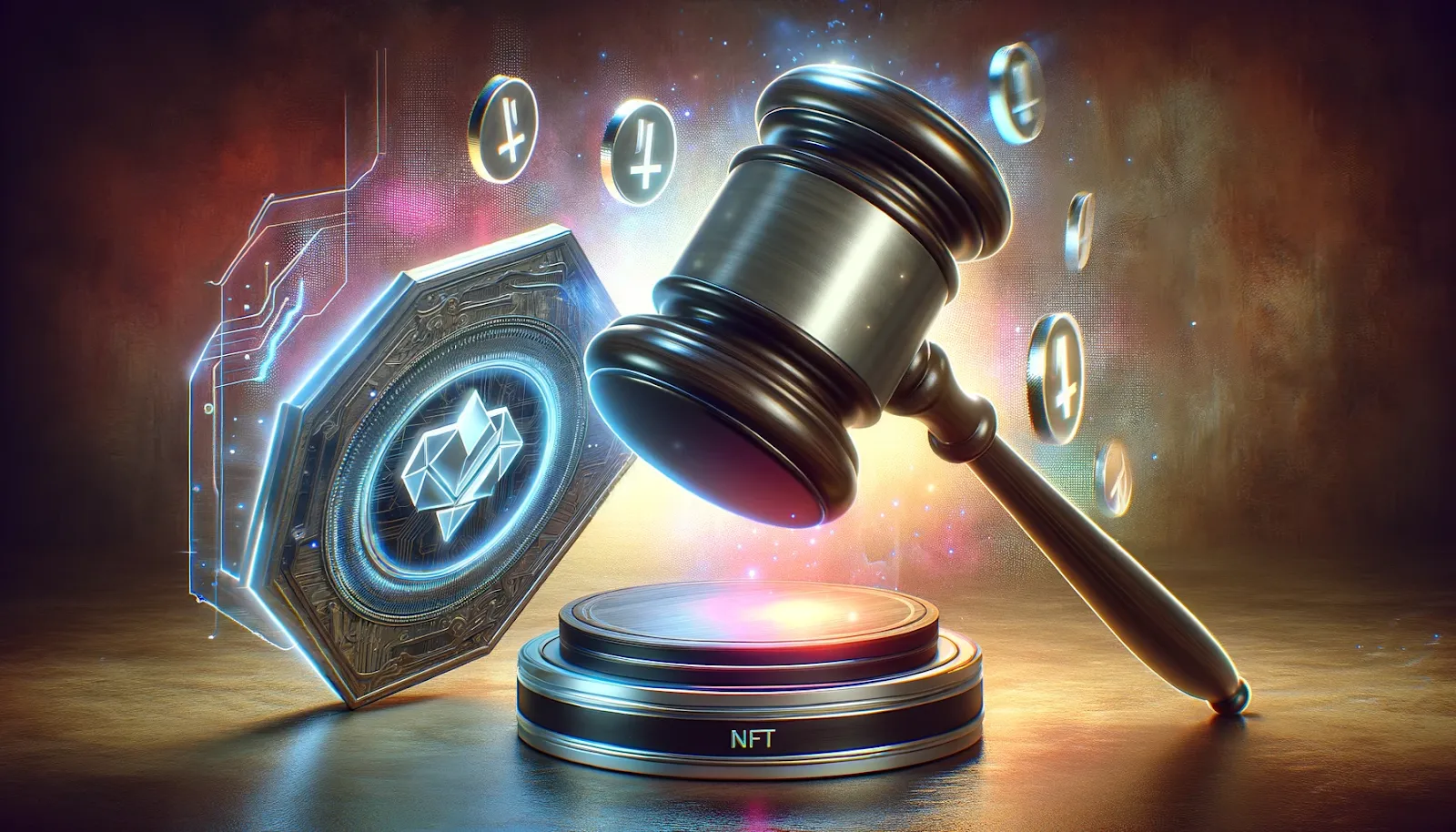
Given the shifting landscape, NFT wallet developers should have flexible compliance strategies that can adapt to new regulations. This includes ongoing legal review and implementing robust KYC and AML processes that meet global standards.
The post-FTX era signals the need to anticipate regulatory changes and build adaptable systems. Close monitoring and proactive collaboration with regulators is essential. Overall, legal compliance is a top priority for NFT wallet development and should be given thought before a single line of wallet code is written.
Design and User Experience: Crafting Intuitive, Secure NFT Wallet Interfaces
Not much can be said about design and user experiences. At the end of the day, your solution is only as good as your users consider it to be. So, this becomes a top priority for you to contemplate once initial considerations are made.
1. Adopting a User-Centric Design Philosophy
A 2022 survey of blockchain gaming prospects revealed that almost 50% of medium-term enthusiasts saw wallet setup as their barrier to entry in blockchain gaming.
As NFTs gain mainstream traction, focusing on user-centric design is critical for wallet providers seeking to drive adoption and build trust. This involves creating intuitive interfaces tailored to diverse user needs.
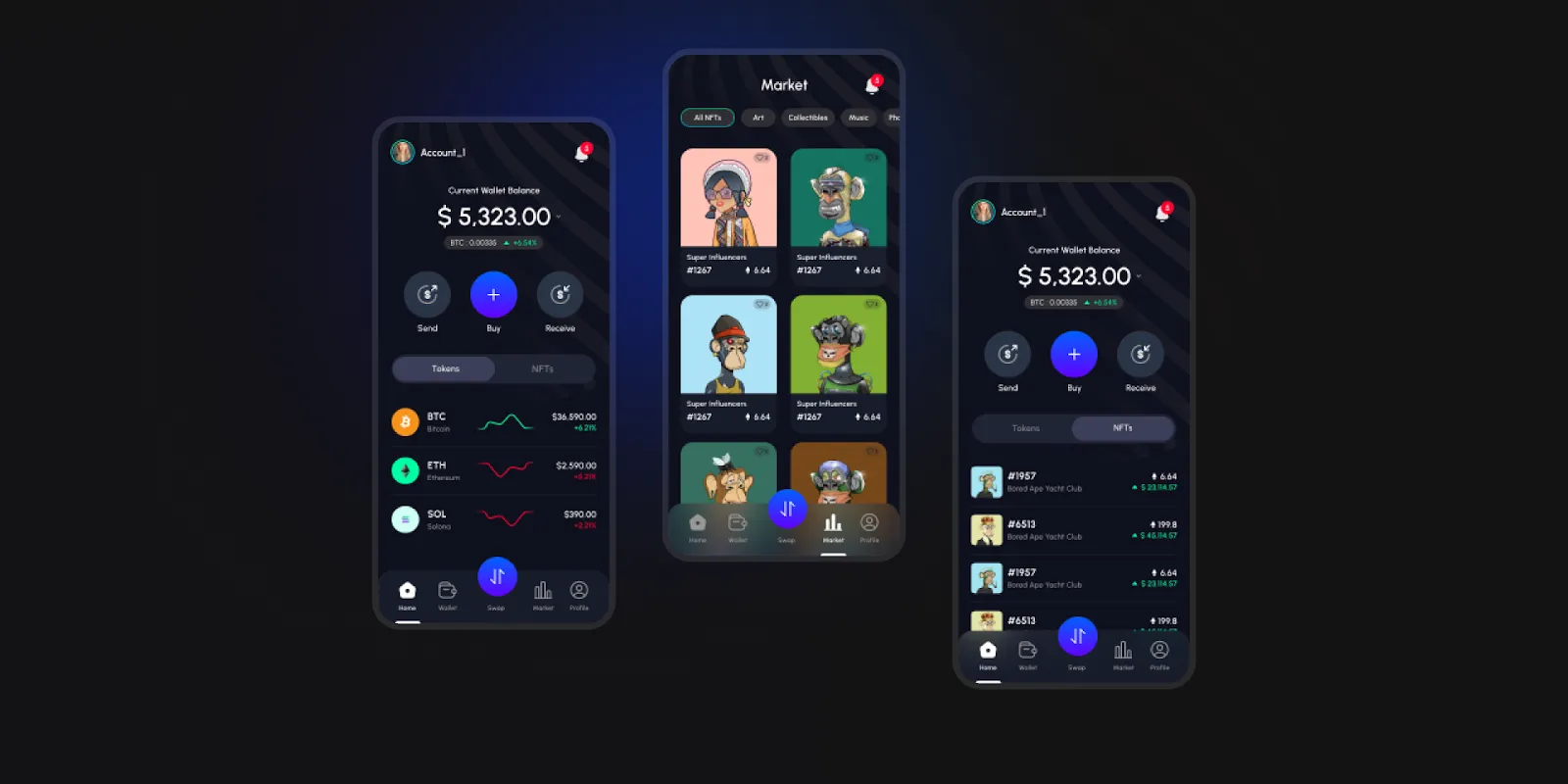
One best practice is to create specialized workflows based on user archetypes. Different users have different needs. So, while an artist- or collector-based design may center around showcasing NFTs, the design for active traders may prioritize market integration focusing on real-time prices of relevant commodities.
Also Read: What are NFTs used for?
Here are some other design considerations to make:
Enhancing Security Education: With safety being paramount, effective UI/UX design should prominently feature security controls while educating users. For example, prompting users to set up two-factor authentication and securely store recovery phrases enhances engagement with critical safety features. Designing for security awareness reduces harmful user behaviors significantly.
Demystifying Complexity: NFT and blockchain technology intricacies can deter new users. Simplifying transactions and surfacing relevant market data in a readily understandable way is key. For instance, displaying gas fee estimates in USD rather than GWEI may lower barriers to entry.
Optimizing Transactions and Accessibility: Smooth transactions and instant access to portfolio data increase user trust and satisfaction. Solutions like transaction batching, which can reduce fees by 75%, help achieve this goal.
Enabling Consistency Across Platforms: Consistent experiences across mobile, desktop, and web are now essential. Cross-device syncing and unified UI/UX prevent user churn and strengthen brand loyalty.
2. Building Inclusivity and Interoperability
While you may be building your NFT wallet for cryptocurrency enthusiasts, chances are that a major chunk of your users comes from some CryptoKitties-like hype. A baffled user not knowing how to use the platform is the last thing that you’d want.
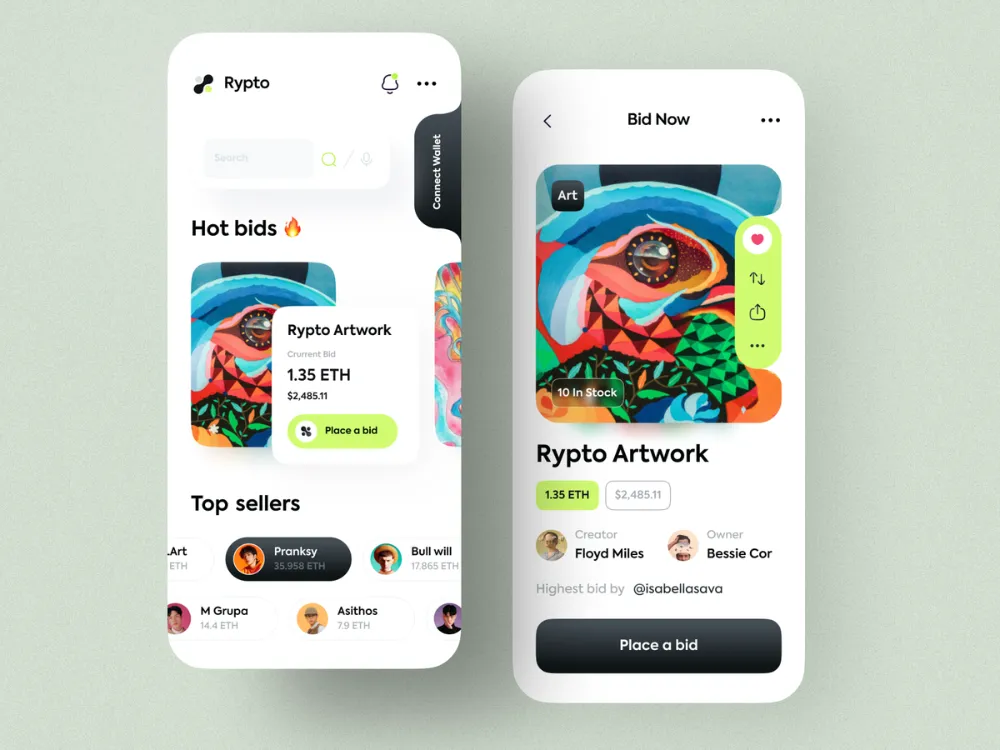
Similarly, in an increasingly interconnected blockchain world, it’s wise to have interoperability built into your system.
Also Read: CryptoKitties Case Study: Key Lessons for Blockchain Development
So, a few things you must consider along these lines include:
Accommodating All Users: Onboarding first-time cryptocurrency users requires accommodating varying expertise levels. Educational resources integrated into the wallet can provide the knowledge needed to confidently use features. Multi-language support also enables global accessibility.
Delivering Cross-Platform Functionality: Wallets must offer robust experiences across all devices. Innovations like browser extensions, mobile widgets, and wearable integration dramatically boost convenience for power users.
Interconnecting Diverse Networks: Interoperability between leading blockchain networks gives users unified control over their asset portfolio. Additionally, custom themes and layouts allow personalization and differentiation.
Designing for Accessibility: Ensuring accessibility for users with disabilities is both an ethical and business imperative. Integrating features like screen readers, voice control, and color contrast modes enables wider usage.
A user-focused design approach that simplifies complexity while providing strong security, education, and interoperability is key for NFT wallet providers looking to capture market share in 2024 and beyond. By crafting intuitive interfaces optimized for all users, brands can build trust and loyalty across diverse audiences.
Technical Development: Building Secure, Scalable NFT Wallets
NFT wallet development requires a multilayered approach - blending security, blockchain integration, gas optimization, and scalability to enable the safe, smooth trading of digital assets.
1. Integrating Blockchains and Smart Contracts
Smart contract wallets are gaining prominence for blending security, speed, and flexibility. Their programmable controls like transfer limits and account freezing protect assets, especially NFTs and dApps.
However, smart contract wallets carry inherent risks like operational, implementation, and design risks, which can result from flawed logic, errors in code, or exploitable design features. Examples include unauthorized transfers, bypassing limitations, or triggering unintended functions.
Managing private keys is critical. Although some NFT wallets do not require users to manage their keys, these keys are stored in the smart contract itself and must be encrypted to prevent compromise.
Comprehensive audits of code, modules, and integrations are essential to mitigate these risks. Continuous verification of transactions also enhances security.
2. Implementing Multi-Layered Security
Robust encryption and private key management are fundamental for securing assets. Features like hardware wallet integration, backup phrases, and multi-signature protocols can add critical protection to power users.
Threats like malicious modules, phishing scams, and dApp integration flaws require vigilant monitoring, auditing, and user education.
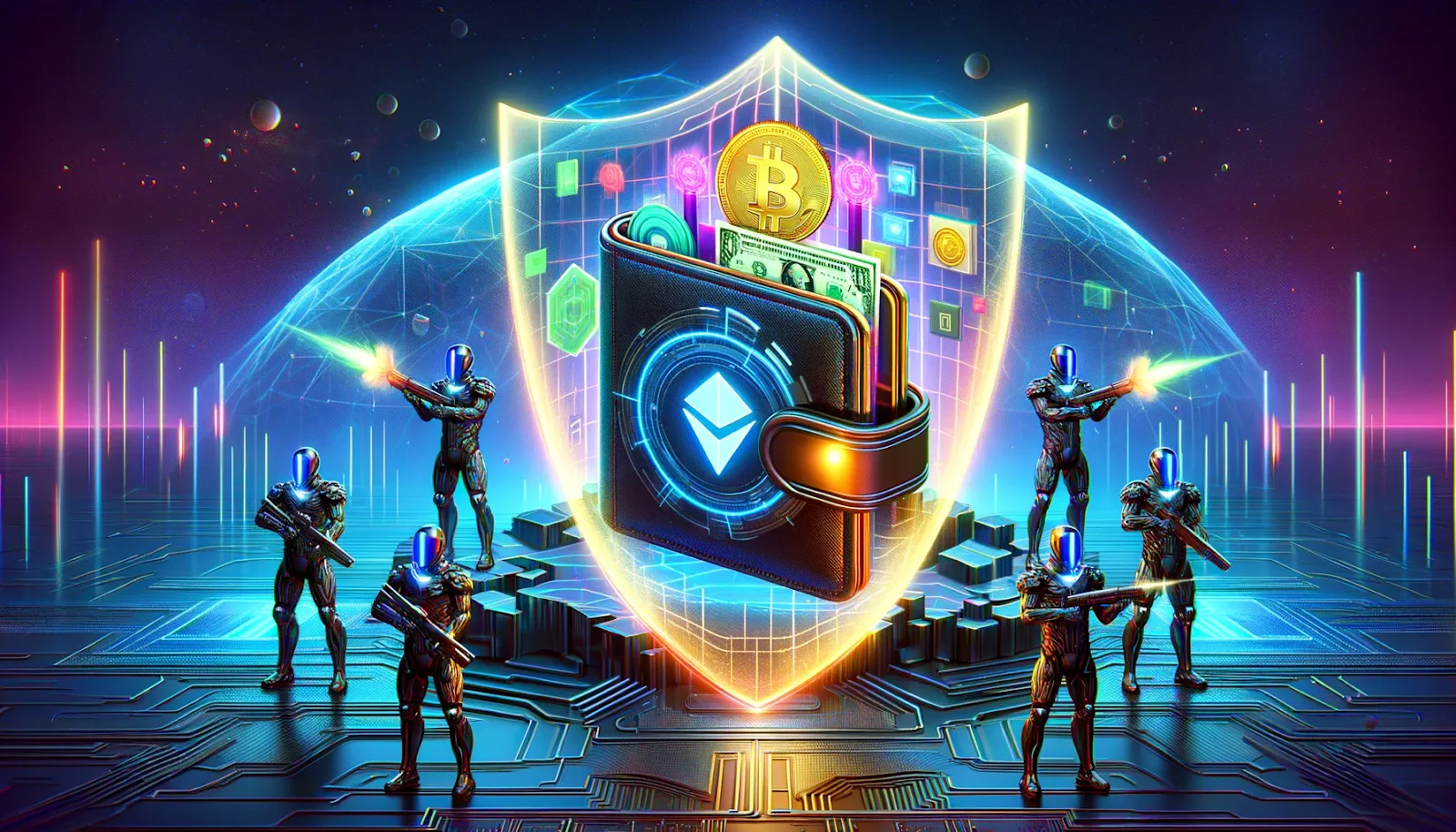
Regular security reviews and testing, including beta user feedback, are imperative to address vulnerabilities proactively. Maintenance and upgrades must align with evolving blockchain standards.
3. Building Scalability and Performance
The wallet architecture must support the specific NFT blockchain while delivering smooth asset transfers and robust security.
Optimizing gas fees is key for economical NFT transactions. Solutions include transacting during low-traffic periods, using lower-cost blockchains, gas-saving tools, and batching transactions that can help you based on your project’s unique requirements. Layer-two scaling and peer-to-peer transactions can also curb costs.
In-Demand Features for NFT Wallet Development
While integrating novel features like meta-transactions and ENS naming can help an NFT wallet stand out, it is crucial to stay grounded in user needs and expectations. As NFTs enter the mainstream, seamless integration with leading marketplaces like OpenSea is now table stakes.
However, the most successful wallets look beyond surface-level features and incorporate advanced yet practical power tools. For example, MetaMask's support for Ethereum domain naming via ENS helps cement web3 identities - a tangible benefit for users. Such niche integrations demonstrate how wallets can create real value versus just chasing trends.
Equally important is crafting accessible educational resources. For all its promise, crypto remains confusing for many new users. Wallets that simplify complex concepts through beginner tutorials, FAQs, and contextual in-app tips can magnify adoption by making blockchain less intimidating.
Community-building is another vital area. Channels like Discord enable transparent discussion between users and developers. Solving pain points directly shared by your community will organically improve the wallet's design.
While robust security via cryptography and audits forms the foundation, remember that users equally care about practical utility in their day-to-day. Building an exceptional yet intimidating user experience is key. By blending must-have security with intuitive design and educational content, NFT wallets can deliver on their world-changing potential.
To Wrap It Up
The NFT wallet space is rapidly evolving. By focusing on core strategic aspects like identifying your audience, selecting the optimal blockchain, and ensuring legal compliance, projects can align their wallet’s capabilities to user needs.
Adopting a user-centric design philosophy that simplifies complexity is key, along with robust multi-layered security and blockchain integration. Educational resources, community engagement, and practical features drive adoption by making blockchain accessible.
While challenges exist, the incredible expansion of NFTs presents a tremendous opportunity for innovative wallet developers. By mastering these dimensions, you can craft a secure, intuitive, and user-friendly wallet that unlocks the full possibilities of digital ownership.
If you need any help, feel free to pick our brains on a 15-minute consultation call. You can also contact us on call or drop a WhatsApp message. Happy building!
Frequently Asked Questions
1. What is NFT Wallet Development?
NFT Wallet Development refers to the process of creating digital wallets specifically designed to store, manage, and transact non-fungible tokens (NFTs). These wallets are crucial for engaging with the NFT ecosystem, allowing users to buy, sell, or trade unique digital assets securely.
2. Why is understanding the target audience important in NFT Wallet Development?
Understanding the target audience helps tailor the wallet's features and user interface to meet specific needs. For instance, a wallet intended for digital artists might focus on showcasing NFTs, whereas one for gamers might prioritize in-game NFT management.
3. How does the choice of blockchain affect NFT Wallet Development?
Different blockchains offer unique features and capabilities. For example, Ethereum is known for its wide adoption in NFT projects, while blockchains like Solana and Cardano offer advantages in speed and energy efficiency. The choice of blockchain impacts the wallet's functionality, security, and scalability.
4. What is the importance of security in NFT Wallet Development?
Security is paramount in NFT Wallet Development due to the rising incidents of cryptocurrency fraud. Features like advanced encryption, two-factor authentication, and regular security audits are essential to protect users' assets from threats.
5. How do legal and regulatory considerations impact NFT Wallet Development?
NFT wallet developers must navigate a complex landscape of laws and regulations, which can vary widely by jurisdiction. Compliance with KYC (Know Your Customer) and AML (Anti-Money Laundering) standards, along with adapting to evolving regulations, is crucial for lawful operation.

